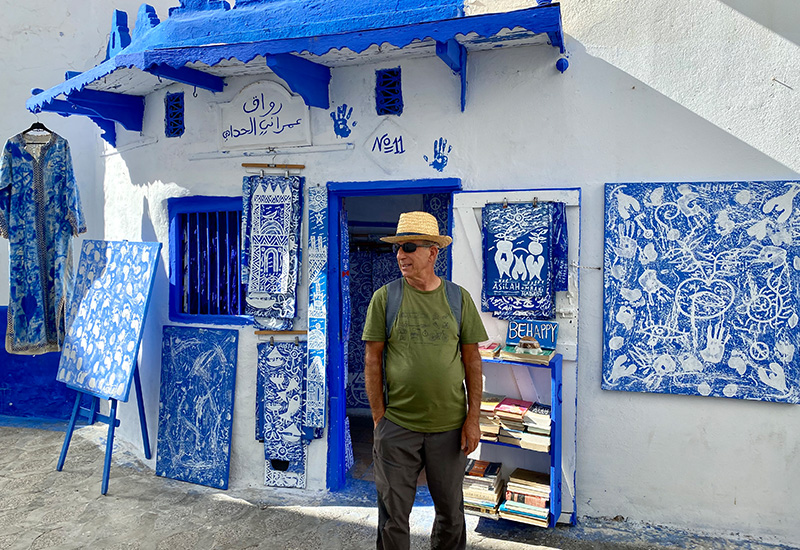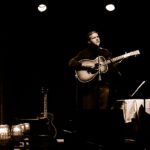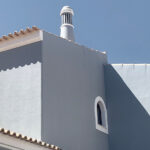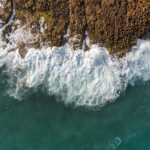For us living in the Algarve, Morocco is practically on our doorstep – but still a world away. We’d been planning a trip for a long time, but last October, we finally took the plunge. With the Fiat Ducato motorhome duly serviced and the spare wheel checked – just in case – we were ready for the adventure.
Getting to Morocco was straightforward. It was a seven-hour drive to the ferry terminal in Algeciras, southern Spain. Based on recommendations online, we headed straight for Viajes Normandie Travel Agencyin Algeciras. Recommendations were wholly merited. Carlos, the manager, provided us with tickets (two adults and a camper), an open return with FRS, and ample choices of times, at 330€. A complimentary bottle of wine and chocolate biscuits were also thrown in.
The following morning, we boarded the ferry. Strangely enough, ours was the only campervan apart from a group of Belgians in their 4X4s, obviously off on a desert safari adventure. After an hour’s journey, we docked at Tangier Med, a massive port now the largest in Africa. A range of controls followed. Passports. Tick. Van documents. Tick. At customs, sniffer dogs searched all the jeeps of the Belgians, and a tail-waving German Shepherd also entered our van. We escaped the third degree, and there was only a cursory glance inside. Our crate of wine bottles passed muster too. Tick.
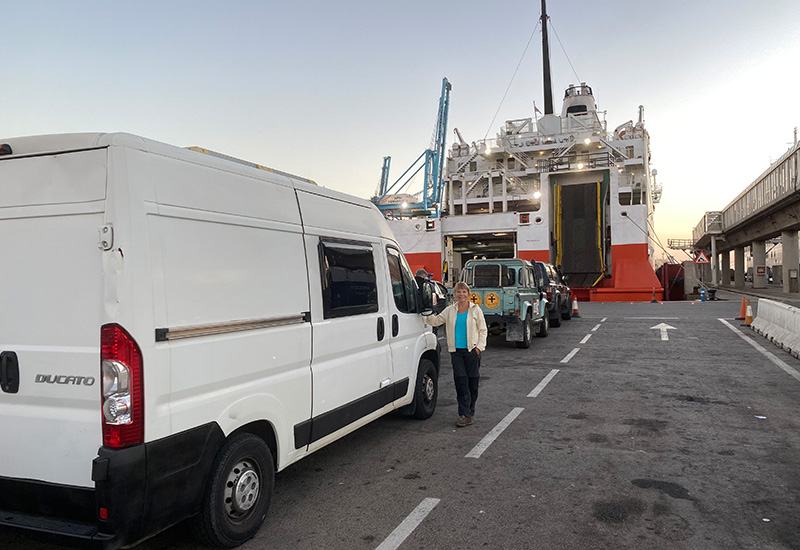
There was a range of kiosks just by the exit of the port area and a shop selling SIM cards. The assistant, who spoke good English, entered the correct codes into the mobiles, including 15€ worth of data. Exiting the shop, we had fully functioning internet and access to Google maps, WhatsApp and Facebook. However, phone calls are still expensive to make. Word of advice, best to get a SIM at the shop and avoid touts who flash their cards on the roadside.
Now we were able to start our adventure in earnest. The sun was shining, and it was lovely to see the countryside unfolding. First stop, Tangier. As it’s such a big sprawling city, we decided to find a campsite, park the van, and plan our route in more detail. We wanted to see as much as possible during our three-week journey covering over 3800 km. We stayed mainly at campsites, and it was often a hit-and-miss affair. Many were well equipped and where possible, a hot shower was most welcome! I was particularly interested in vestiges of Portuguese involvement in Morocco over the centuries in the places we visited.
On the first leg of our journey, we followed the west coast road to Agadir. There were several gems on the way. Asilah, 31 km south of Tangier, was a pleasant little town. It’s small but has a strategic port that attracted interest from neighbouring countries over the centuries. The old medina we visited has ramparts from the 15th century, built by the Portuguese, although the town subsequently became Spanish territory. Hence you can still see tortillas and paella on the menu in most restaurants! It was lovely to stroll along the winding, narrow alleyways and see the colourful buildings and shops selling artwork, clothes and handicrafts.
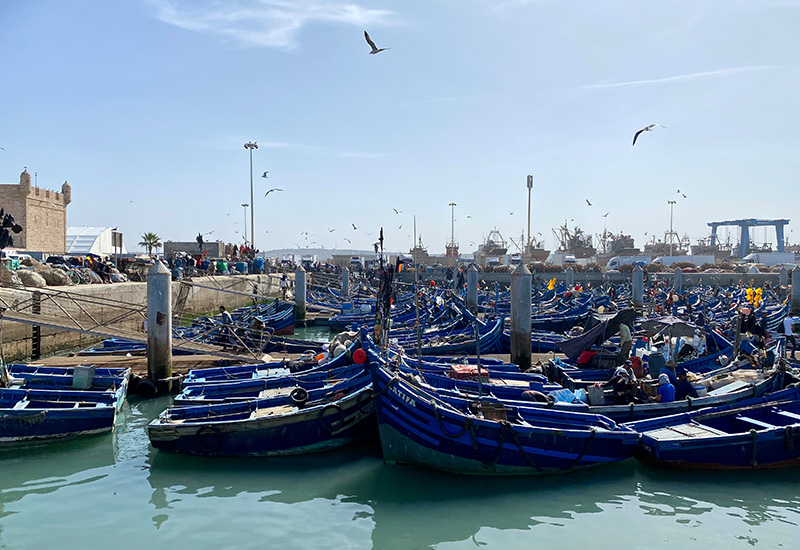
Visiting the large bustling cities such as Rabat and Casablanca was less rewarding, and we had difficulty finding anywhere to stay for the night. In Rabat, we did wild camping at a secure railway station car park using the handy app, Park4Night. We had a surprisingly quiet night.
Essaouira, further down the coast, was a real breath of fresh air. Literally. Known as the ‘Windy City of Africa’, it attracts hordes of surfers between April and November.
But mercifully, we were spared. We spent a lovely, calm morning wandering around the medina, an excellent example of a mid-18th-century fortified town. It was added to UNESCO’s World Heritage list in 2001. It was a feast for the eyes. Windy roads, whitewashed houses with ornate wooden doors, leafy plazas, and many shops selling artwork and handicrafts. Yes, it was touristy but rather appealing.
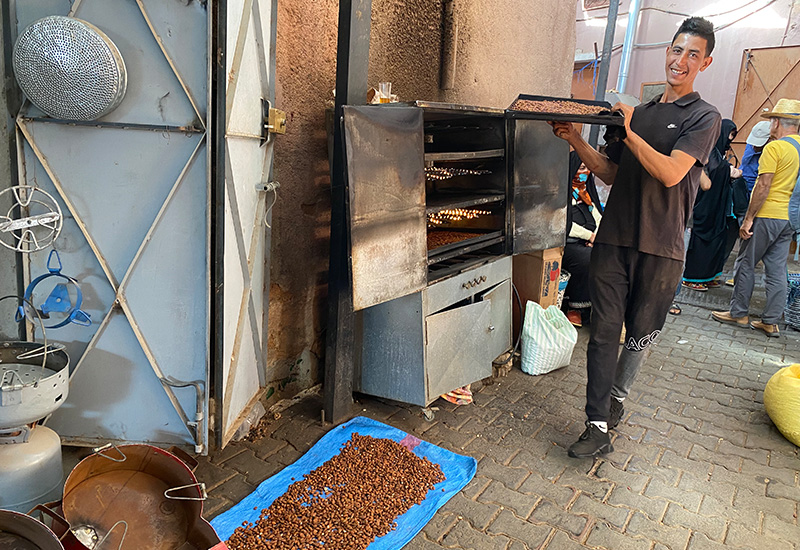
A visit to the bustling fish market by the ramparts was a must. All freshly caught and displayed in their full glory. There was a cacophony of seagulls, no doubt hoping for a quick lunch, and opportunist cats were ever-present.
The drive to Agadir along the coast with soaring cliff views was spectacular, and we stopped several times to take in the panorama. Then, 68 km from Agadir, we drove through a village on the estuary Oued Tamri and were struck by the vast green foliage below in the otherwise arid landscape. There were palm trees, argan trees and a vast expanse of banana trees. In the town itself, there were rows of stalls selling fruit. I wish now we had stopped and stocked up on what would have been fresh and delicious produce.
Agadir is now a centre for package tour holidays with its sprawling beaches and hotel complexes. Its history, however, remains fascinating. It was founded in the 15th century by Portuguese merchants wanting to develop trade links with the Saharan caravans. Its fortunes fluctuated over the centuries, especially as sea traffic was diverted to Essaouira in the 1760s. The 1960 earthquake had a devastating effect on the city. Since its reconstruction, its flourishing port now harbours a large fishing fleet, helping Morocco become the world’s largest exporter of tinned sardines, surpassing Portugal of old.
Again, we didn’t tarry long in Agadir. It doesn’t offer much interest for campers and independent travellers, but the drive there was well worth it!
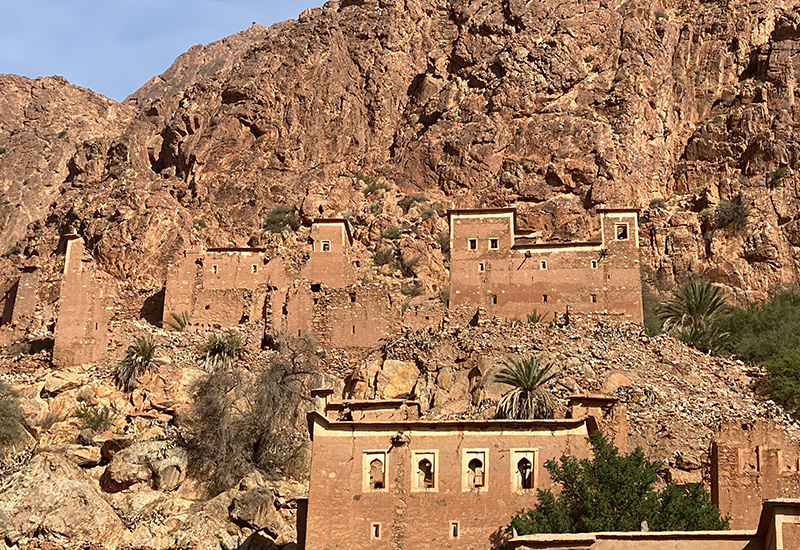
We then veered inland into the Anti-Atlas Mountain range. It’s a traditionally Berber region and stronghold of the Chleuh tribes who live in the oasis valleys (palmeiraies), flanked by red granite mountains. We navigated one breathtaking hairpin bend after another to reach Tafraoute, nestling in the Ameln Valley in the heart of Berber country. It immediately entered my list of favourite places.
We stayed a few nights at Tazka Camping with friendly and hospitable staff. Each morning we were offered fresh bread and even a tagine at lunchtime. All free of charge.
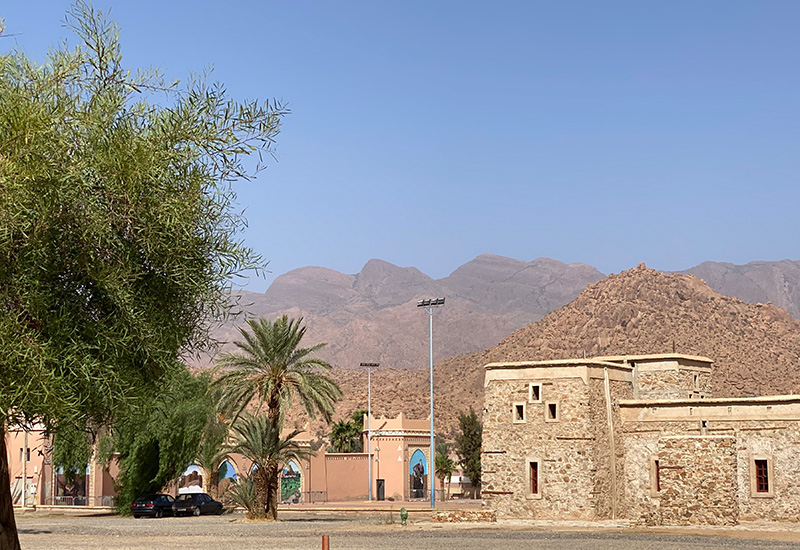
The special services didn’t end there. Alvaro had his hair cut by an itinerant barber who arrived at the campsite. The brother of the owner was a mechanic, and we could have had repairs done to the van if needed. And our ‘guardian angel’ in the tall shape of Saed, clad in a white turban and bright blue tunic, also arrived to offer his services. He knew the best restaurants and places to visit and always pointed us in the right direction. And yes, he did have a shop and an agency, Maison Touareg, organising excursions. We bought a beautiful Berber carpet after a hard bargaining session. Saed brought in his brother to help, but Alvaro stood his ground. In the end, we sealed the deal – probably to everyone’s satisfaction.
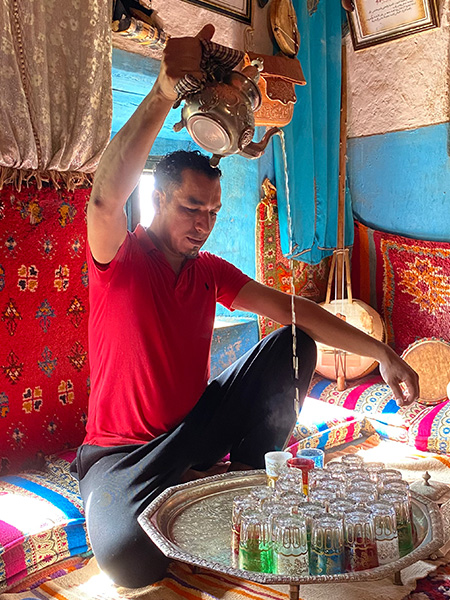
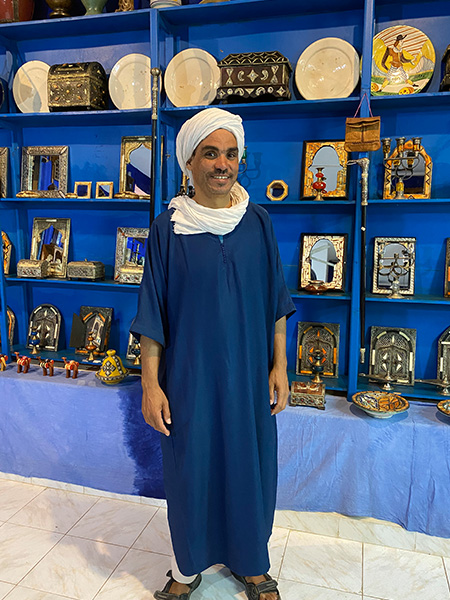
Based on the suggestion by Saed, we visited La Maison Traditionnelle at Oumesnat. The Maison is a 400-year-old, four-story Berber house amid a largely uninhabited hilltop village. We could see bulging boulders incorporated into the walls of centuries-old homes, barely discernible in the mountainside.
Mustafa Mafoud showed us around. He once lived in the house, as did several generations of his family, so he was the right person to explain what it was like to live in a traditional Berber household and the function of each part of the building. It is now a museum and well worth visiting.
Our journey then took us further south, where our adventures in the desert began.
Read part 2 of Lena’s Moroccan journey in the April edition.
